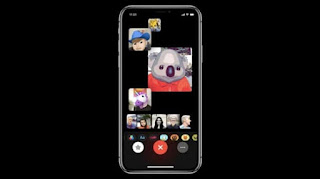Now that the theory about SEO and importance of on-page SEO is justified, let’s move on to the practical part
1. Content comes first
A website with brilliant content can do great with or without SEO, a website with bad content will not survive with or without SEO, a website with good content can become even better with SEO!
- Original Content (articles, text, images, videos, presentations, infographics, comments etc.) – No copies or rewrites of existing articles.
- Content published on your website first – Even if it’s your own content, if you have already published it on another website then it’s not good for your site.
- Content that includes text as well – Try to have text to accompany your non-text content. For example, if you post videos on your website try to add a text description as well. If you add images try to describe in words what the image is all about.
- Content that is useful – Don’t publish content for the sake of publishing. Before hitting the publish button make sure that what goes live adds value to your website.
- Content that is well researched – Users don’t want to read quickly prepared posts and neither do search engines.
2. Page titles, description and formatting
This is SEO 101 but very important for on-page SEO. When search engines are ‘reading’ your pages, among the things, they check the page title, the description of the page, the headings and content (text, videos and images).
Page titles – Each page must have a unique title that will help both search engines and users understand what the page is about. A page with title “On Page SEO Tips” is better than a page with title “index.html”.
Descriptions – The page description is what the searcher will see in the search engine results page. It has to be descriptive, up to 150 characters and unique for each page.
It’s your opportunity to advertise your page and convince the searcher to click your link and visit your website rather than selecting one of the other links.
Read SEO Tips for Beginners, for examples and guidance on how to write good titles and descriptions.
Formatting – A page needs to be properly formatted. Think of it like a report which needs to have a heading (h1) and sub headings (h2).
Important parts of the report are highlighted with bold, underline or italics.
Do not just throw text on the page but make sure that it is readable.
Besides the formatting practices explained above, you also need to use a good size font (at least 12px) and split the text into small paragraphs (max 4-5 lines).
Images – Images are important for presentation purposes but they should not increase the loading time of the website. Best practices for using images:
- Use original images. If you need to use an existing image from the web you need to reference the source.
- Optimise the size of the images – the smaller the size (in bytes) of the image the better.
- Use an ALT tag to describe the image – This helps search engines understand what the image is about.
- Use descriptive filenames – Don’t just name your image ‘image1.jpg’ but try to use descriptive filenames, for example ‘man-doing-push-ups.jpg’.
- Use a Content Delivery Network – If you have a lot of images in a single page you can use a CDN service that will make your page load faster. In simple terms, your images will be hosted and served by a number of servers and this speeds up the loading process.
3. URL Structure
The URL structure is an important part of on-page SEO. Whenever I talk about URL structure, I prefer to split it into 4 major parts:
Permanent links – A permanent link is the unique URL of each page. Good URLs should be less than 255 characters and use hyphens to ‘-‘separate the different parts.
For example a good URL is: https://www.reliablesoft.net/diy...
A bad URL is:
4. Internal linking
Linking to pages within your website is very important for SEO because:
It’s like building your own web: If you watch this nice tutorial by Google on how search works, you will see that the first step a search engine spider will do is follow the links they find.
So when they arrive at your page, if you don’t have any other links within the text they will read your page and go but if you have links pointing to other pages within your website they will take those into account as well.
5. Speed and Mobile
Last but not least, 2 SEO techniques that are becoming more and more important are Speed and Mobile friendliness. http://ahappyreview.blogspot.com/2017/05/top-4-on-page-seo-techniques.html
Speed: Google is investing a huge amount of money to make the web faster. In every Google I/O someone will talk about the importance of speed and their desire to include the fastest websites in their index.
In order to ‘force’ web site owners to take speed into account they have officially added speed as one of the ranking factors.
So, we know for sure that website speed does matter when it comes to SEO and ranking. If In details mail me sumitdekavadiya@gmail.com. Related:Group Buy SEO Tools
Related:Groupbuy ahrefs SEO Tools

No comments:
Post a Comment